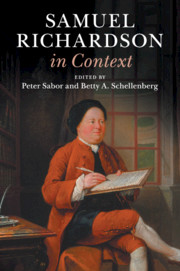Book contents
- Samuel Richardson in Context
- Samuel Richardson in Context
- Copyright page
- Contents
- Illustrations
- Notes on Contributors
- Preface
- Acknowledgments
- Chronology
- Abbreviations
- Part I Life and Works
- Part II Critical Fortunes
- Part III The Print Trade
- Part IV The Book and Its Readers
- Part V Literary Genres and the Arts
- Part VI Social Structures and Social Life
- Further Reading
- Index
- References
Further Reading
Published online by Cambridge University Press: 21 September 2017
- Samuel Richardson in Context
- Samuel Richardson in Context
- Copyright page
- Contents
- Illustrations
- Notes on Contributors
- Preface
- Acknowledgments
- Chronology
- Abbreviations
- Part I Life and Works
- Part II Critical Fortunes
- Part III The Print Trade
- Part IV The Book and Its Readers
- Part V Literary Genres and the Arts
- Part VI Social Structures and Social Life
- Further Reading
- Index
- References
- Type
- Chapter
- Information
- Samuel Richardson in Context , pp. 319 - 326Publisher: Cambridge University PressPrint publication year: 2017



